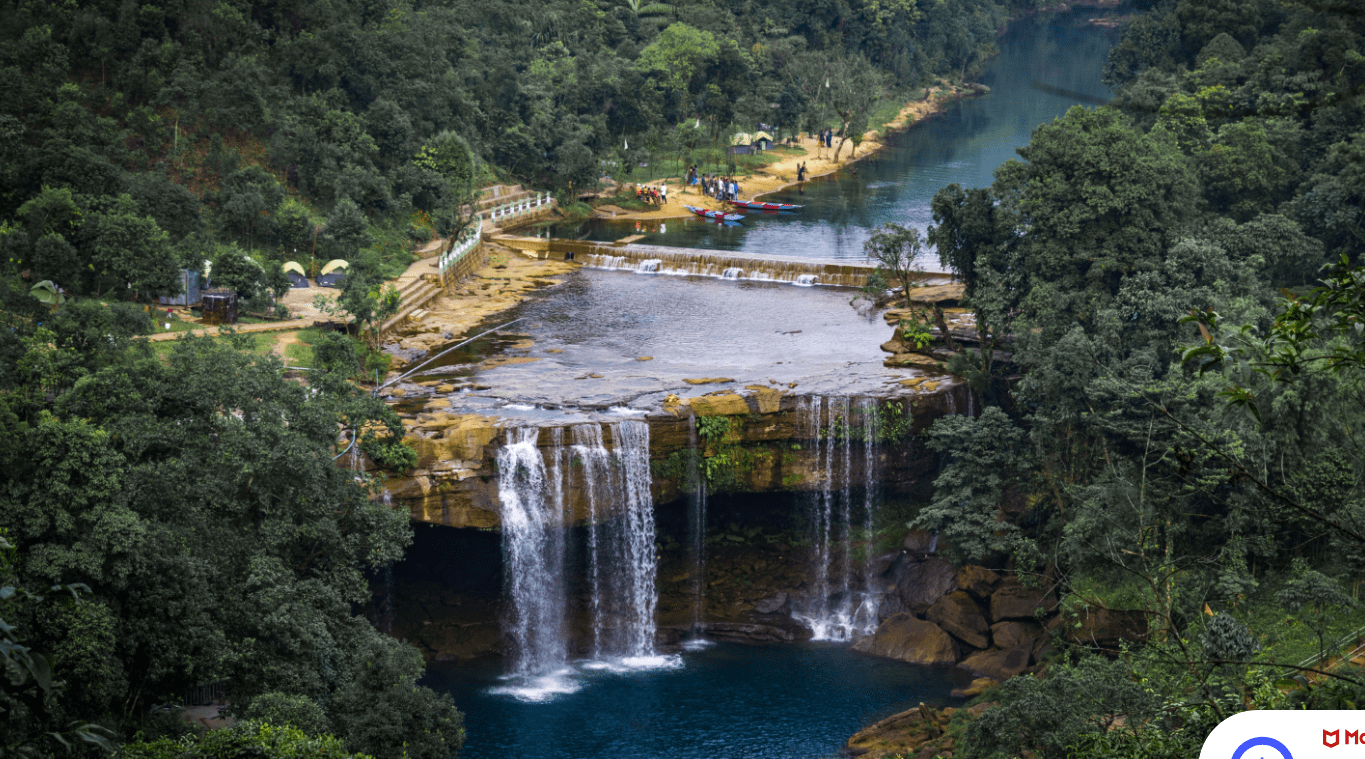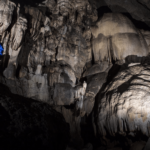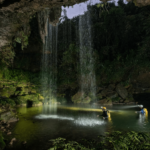Some places defy description, leaving you with a sense of wonder that words simply cannot capture. These rare spots, though few, truly exist. Wari Chora in the Garo Hills of Meghalaya is a perfect example.
As a travel blogger and YouTuber, we’re always on the lookout for the ideal photograph or the perfect angle. We constantly think about how to best present a story or video. I’m sure many of my fellow bloggers can relate. But when we arrived at Wari Chora, we were overcome with awe. We found ourselves mesmerized by the natural wonder before us, and we realized that sometimes, it’s best to let go of our thoughts and simply enjoy the moment.
Wari Chora – An Offbeat Gem in Meghalaya
Meghalaya has a knack for surprising us. This stunning state in Northeast India, known for being home to the wettest place on earth, is full of hidden treasures. I had once thought nothing could surpass Krem Chympe, but then Wahniangleng came along, and now, Wari Chora has proven me wrong. This is a recurring theme in our travels.
What is Wari Chora?
Wari Chora is a small canyon with a mountain river flowing through towering gorges. In the local Garo dialect, “Wari” means “river,” so Wari Chora roughly translates to “deep river.”
Until a few years ago, this place was virtually unknown, even to the locals. It was only recently discovered and has since become a popular tourist destination. Its fame surged after a few Instagram reels showcased its beauty.
Where is Wari Chora Located?
Situated in the South Garo Hills of Meghalaya amidst lush greenery, Wari Chora is not easily found on Google Maps. The closest major town is Baghmara, approximately 285 km from Shillong and 250 km from Guwahati. The nearest village is Dabalgre, with another significant village nearby.
Information about Wari Chora is still limited, so we relied on local guides to reach this hidden gem.
Wari Chora – Canoeing Experience in Meghalaya
As we neared the end of our Meghalaya Road Trip, Wari Chora was our final destination. We had already explored several incredible and offbeat places in the region.
The Garo Hills, home to the friendly Garo tribes with their rich cultural heritage, was a highlight of our trip. After visiting the Siju Caves, we made our way to Emangre, where we planned to stay the night before heading to Wari Chora.
Reaching Wari Chora Canyons
Pictures of Wari Chora had prepared us for a bit of trekking. The next morning, after breakfast, we awaited our journey to Wari Chra. A Bolero pickup van soon arrived to take us to the trekking starting point.
Our off-roading adventure began. We navigated through villages, farmlands, and bamboo forests, enduring a bumpy ride for about an hour. We later learned that we had covered nearly 15 km in the 4×4 vehicle before beginning the trek.
Trek to Wari Chora
We started our trek through a jungle trail until we reached a small bamboo hut with a Wari Chora sign. After waiting for our guides, we embarked on the trek.
Initially easy, the trail became more challenging as we descended to the riverbed, with dense forest canopy overhead. The local leeches during the monsoon were mentioned, but thankfully, we didn’t encounter any.
Finding Wari Chora
With no well-marked trails, a local guide is essential. After about an hour, we could hear the faint sound of flowing water. The final part of the trek involved some tricky maneuvers, including rappelling down rocks.
Upon reaching the river, our guides began inflating the canoes and rafts. I stood in awe, gazing at the river and surrounding jungle, which seemed to flow into an unknown and mysterious abyss.
Legend of Wari Chora
Wari Chora is steeped in local legends, including tales of seven giant serpents protecting the river. Disrespecting the river supposedly angers these serpents. Locals also speak of a beautiful mermaid who occasionally appears. Historically, the Rongdik River, a tributary of the Simsang River, was used for transporting goods to Bangladesh, though its course has since changed.
And the Magic Starts
As we began our canoe journey, we approached the canyon’s mouth, navigating through moss-covered surfaces and dripping water. The array of colors—teal, turquoise, orange, ochre, jade—was mesmerizing. Pictures alone cannot do justice to the vibrant beauty of Wari Cora.
Waterfalls
We soon encountered a small waterfall amid the canyons. After pulling the rafts aside, we disembarked to enjoy the view of the waterfall and towering cliffs. The sunlight filtering through the canyons created an ethereal atmosphere.
Rainbows
Some visitors swam in the river while our guide informed us that a rainbow forms at the base of the waterfall around 12:30 pm due to the sunlight. We climbed a cliff to catch this breathtaking sight.
Trekking Back
Returning from Wari Cora felt particularly challenging after such a profound experience. The trek back took us approximately 1 hour 45 minutes. We then endured the bumpy ride back to Emangre, where our hosts welcomed us warmly.
In Conclusion
Wari Chora made a lasting impression on us. Its unspoiled beauty and the warmth of its people will remain with us.
FAQs
How to Reach Wari Chora?
To reach Wari Chora, you first need to get to the Garo Hills. The nearest major town is Baghmara, accessible from Shillong or Guwahati. Local transport beyond Tura is unreliable, so it’s advisable to travel by your own vehicle. From Emangre, you’ll need to off-road for about 15 km to the trek’s starting point.
Where to Stay at Wari Chora?
Emangre offers homestay options, with rooms costing INR 700 per bed and tents for INR 500. Dabalgre village also has a homestay option.
What is the Best Time to Visit Wari Chora?
The ideal time to visit is between November and February, when the weather is cool and dry. If visiting during the monsoon, bring rain gear and consider using salt or deodorant to deter leeches.
How Long Does It Take to Trek to Wari Chora?
The trek to Wari Chhora took about an hour to descend and 2 hours to ascend. The distance is approximately 3 km each way, though local estimates vary.
How Difficult is the Trek?
The trek is moderately difficult, with some tricky parts requiring crawling and climbing. It’s manageable with the help of local guides.
Do We Need Guides to Visit Wari Chora?
Yes, local guides are essential for navigating the jungle trails and arranging the raft. Your homestay can help you find a guide.


